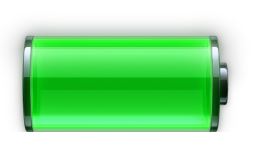
I've been reading The
Innovator's Dilemma by
Clayton M. Christensen of
Harvard Business School and I've been thinking about how the lessons of his book would apply to disruptive technologies such as interactive wall and table displays.
Essentially, this book argues that companies (such as the Hard Drive industry) are exceedingly good at listening to their customer base and sustaining innovations in their products to meet their client's needs. Disruptive technologies (e.g. smaller hard drives, solid state disks) are usually first developed and marketed by large corporations. However, these technologies usually do not meet the needs of existing clients (e.g. too small size, too expensive, too slow) thus these projects are shelved until the technology becomes more viable in the marketplace.
Microsoft Surface

On the flipside, startup companies focus on niche markets (e.g. laptops, mp3 players) and ignore the needs prized by current vendors. Often the rate of improvement of these technologies greatly exceeds the demand by their niche market. This happens until the technology improves to a point that it can compete with the sustaining technologies of the large corporate vendors (e.g. 3.5" disk drives).
Hewlett Packard

At this time we see a huge shift in the industry, people start migrating towards the disruptive technologies and the large corporations are continually catching up to the latest advancements of the startup companies. This continues to happen in many areas such as the Internet, PCs, GUIs, industrial hauling, cell phones, portable audio, PDAs, laptops and much more.
Panasonic

Digital tables are a disruptive technology, right now they are not as efficient as using a keyboard and a mouse. Speech and gesture recognition have years of improvement ahead of them before they become viable for everyday use. However, the rate of improvement of interactive surface technology is significantly faster than the rate of improvement of desktop interaction technologies.
Hitachi

Eventually the performance of interactive (small and large) surfaces will rise to challenge the efficiency of desktop computers. This will not happen overnight, it could be decades before we see such a transition. Nonetheless it will happen. And when it does I wonder if the existing companies will rise to deliver these next generation technologies, or if it will be startup companies that will once again lead the way in technology innovation.
Smart Technologies

As I enter my second and third round of job applications, I have applied to many large corporations that are adamant about making sure they are on top of the large display interaction trends. Large corporations such as
Microsoft,
Hewlett Packard,
Panasonic,
Hitachi,
Smart Technologies,
Philips,
Mitsubishi,
Accenture, and
Sony have already created demonstration systems of interactive large displays.
Philips

Several startup companies have also been created to market large display interactions to niche audiences. These companies include
Perceptive Pixel,
Lemur Jazz Mutant, and
Fingerworks which was recently acquired by
Apple for the development of the
iPhone which was later replicated by
Nokia).
Mitsubishi

The billion dollar question is: will it be the startup companies or the large corporations that deliver these next generation interactive touchscreen technologies. I'm really not sure, but I intend to find out by apply to each of these companies.
Accenture

Sony

Perceptive Pixel

Jazz Mutant

Fingerworks





















